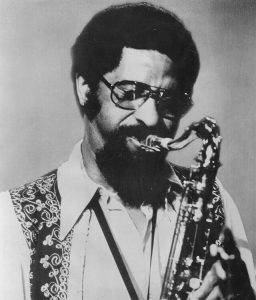Nominated for the 1977 Grammy Award
Music featured in this program
00:00 Macho (First Movement)
10:50 Soy Salsero
21:04 Mi Rito Llego
28:28 Despierta Boricua
36:22 Macho (Second Movement)
Liner Notes
Side A
Mi Ritmo Llego * (Guaguanco/4:55
(My Rhythm is Here)
(Ubaldo “Lalo” Rodriequez) (Coco Mus./BMI)
(Arr: Ray Santos)
Desilusion * (Bolero/3:45
(I’m Disillusioned)
(Ubaldo “Lalo” Rodriequez) (Coco Mus./BMI)
(Arr: Ray Santos)
Despierta Boricua ** (Son Montuno/4:15
(Wake up Puerto Rican)
(Frank “Machito” Grillo)) (Coco Mus./BMI)
(Arr: Lito Pena)
Guaguanco a Mexico * (Guaguanco/4:17
(Guaguanco for Mexico)
(Ubaldo “Lalo” Rodriequez) (Coco Mus./BMI)
(Arr: Elias Lopez)
No Seras Para Mi * (Bolero/3:29
(You’ll Never Be FOR Me)
(Grecia Domenech) (R.R.)
(Arr: Jorge Millet)
Side B
Macho ** (Instrumental) (Descarga)/13:00
(My Rhythm is Here)
(Jorge Millet) (Coco Mus./BMI)
(Arr: Jorge Millet)
Soy Salsero ** (Son Montuno)/7:00
(I Sing Salsa)
(Frank “Machito” Grillo)) (Coco Mus./BMI)
(Arr: Jorge Millet)
PRODUCED BY HARVEY LAVERNE
Organ and Acoustical Piano Solo “Macho” / Charlie Palmieri
Piccolo Trumpet Solo “Macho” / Lew Soloff
Timbales Solo “Macho” / Nicky Marrero
Electric Piano “Macho” / Jorge Millet
Alto Sax Solo “Macho” / Bobby Porcelli
Electric Guitar “Macho” / Harry Vigiani
Bata Drums “Macho” / Julito Collazo, Angel “Cachete” Maldonado, Hector “Flaco” Hernandez
Trumpet Solo “Soy Salsero” / Victor Paz
Trombone Solo “Mi Ritmo Llego” / Barry Roger
Recording Studio / Plaza Sound
Recording Engineer / Rob Freeman
Overdub Engineer / Don Hunerberg
Mixed at / Blank Tapes
Mixed by / Harvey Averne
Mix Engineer / Bob Blank
Mastering / Jose Rodriguez
Photography and Album Design / Hal Wilson
1st Session *
Leader / Frank “Machito” Grillo
Director – Percussion / Mario Grillo
Vocals / Lalo Rodriguez
Conductor / Jorge Millet
Piano / Ray Coen
Trumpets / Paul Cohen, John Faddis, Tony Cofresi, Wyman Reed
Trombones / Barry Rogers, Leo Pineda
Alto Saxophone / Lennie Hambro
Tenor Saxophones / Mario Rivera, Jose Madera
Baritone Saxophone / Leslie Jonakins
Bass / Jose Santiago
Maracas / Ismael Quintana
Bongos / Tommy “Chuckie” Lopez
Conga / Johnny “Dandy” Rodriguez
Timbales / Nicky Marrero
Coro / Machito, Adalberto Santiago, Ismael Quintana, Chivirico Davila
2nd Session **
Leader / Vocals / Frank “Machito” Grillo
Director – Percussion / Mario Grillo
Conductor / Jorge Millet
Piano / Charlie Palmieri
Trumpets / Victor Paz, Lew Soloff, Tony Cofresi, Charlie Camilleri
Trombones / Barry Rogers, Sam Burtis
Alto Saxophone / Bobby Porcelli
Tenor Saxophones / Lou Orenstein, Mauricio Smith
Baritone Saxophone / Mario Rivera
Bass / Andy Gonzalez
Maracas / Ismael Quintana
Bongos / Tommy “Chuckie” Lopez
Conga / Johnny “Dandy” Rodriguez
Timbales / Nicky Marrero
Coro / Lalo Rodriguez, Ismael Quintana, Victor Velazquez
Special thanks to Victor Paz, Jorge Millet, Mario Grillo, Doug Jones
Translation of “Macho” – First Movement
The singer is Machito.
Machito and the musicians, especially the bata drummers, are evoking the Orisha.
“ ‘Boru ‘buya,” a contraction of the Yorùbá-Cuban greeting “ìbo rú di (ì)’bo ye,” routinely bestowed upon high priests, or babalawo in Cuba. The phrase’s literal meaning is: “The sacrifice that is carried becomes the sacrifice that is suitable.” (Source: “Machito and His Afro-Cubans: Selected Transcriptions”)
“Ashe. Mucho ashe.” – Creative force. Much creative force.
“Suerte y salud para todos mis hermanos.” – Luck and health to all my brothers.
Elegua – Orisha of beginning, of crossroads, of doorways, of fate
Babalu Aye (San Lazaro) – Orisha of the healing spirit, protector of the weak and the ill
Yemaya – Orisha of the Ocean’s surface, of love, fertility and family
Shango – Orisha of thunder, drumming, dancing, fire and male virility
Oshun – Orisha of beauty and sexuality
Obatala – Sky Father and creator of Orishas and human beings, rules all
Great news!
You can now watch this video – and all Spanish language videos – with English subtitles. It’s free!
Click here for instructions on how to turn on English subtitles.
– Ken McCarthy
Jazz on the Tube
P.S. Our unique programming is made possible by help from people like you. Learn how you can contribute to our efforts here: Support Jazz on the Tube
Thanks.


